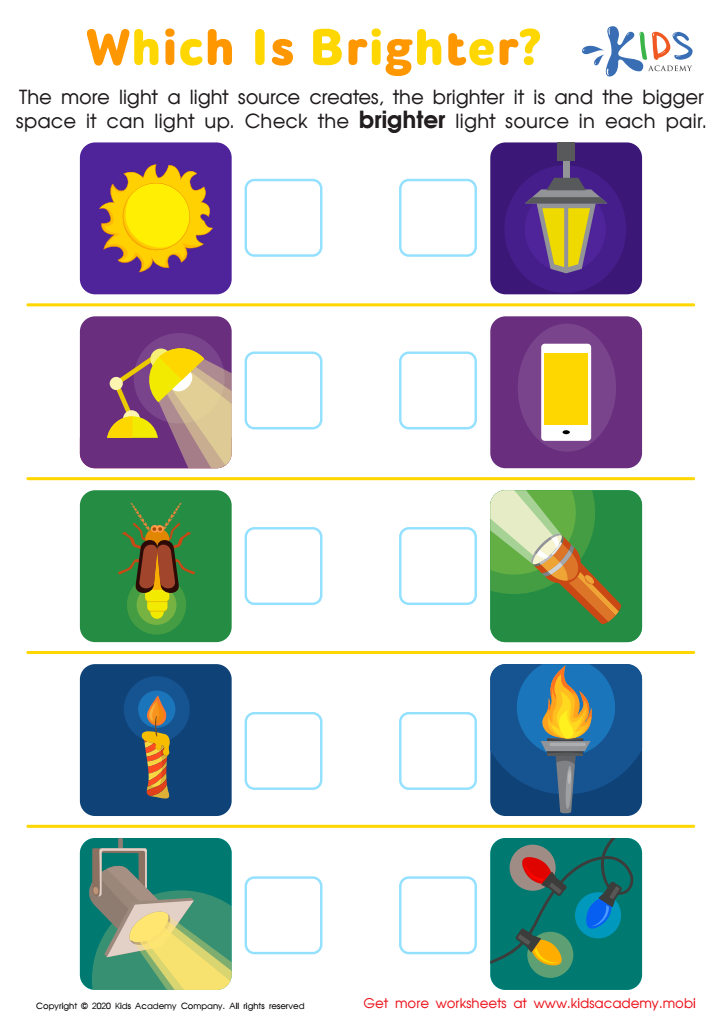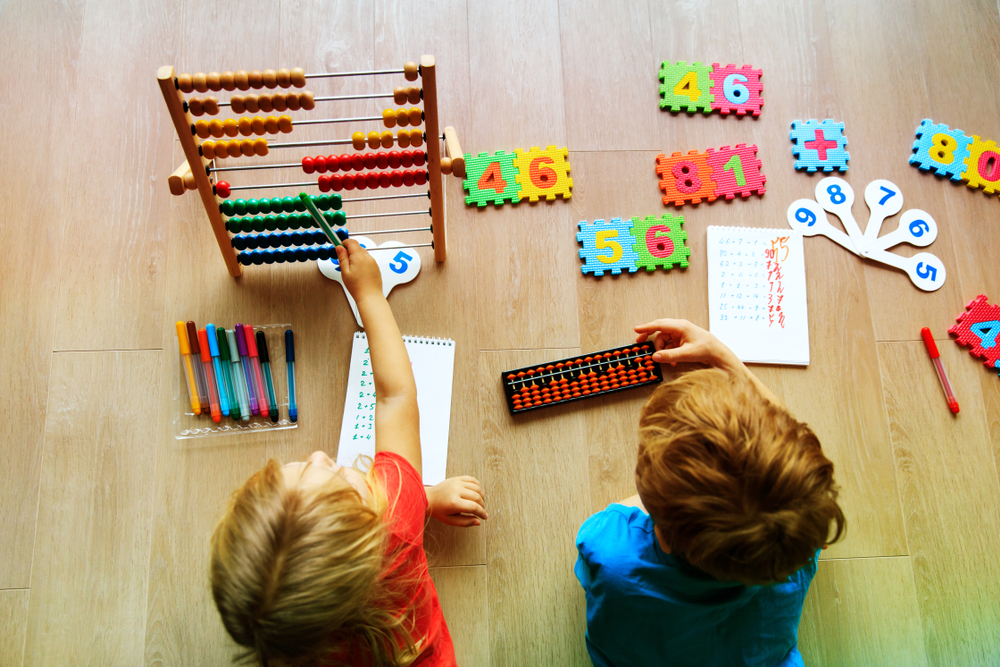Perception evaluation Worksheets for Kids
1 filtered results
-
From - To


Which Is Brighter? Worksheet
Question/Answer
What are some effective activities to train students’ Perception evaluation skill when teaching them about Physical Science?
Effective activities to train students' perception evaluation skills in Physical Science include hands-on experiments, observational studies using different sensory inputs, interactive simulations, comparative analysis of physical phenomena, and guided inquiry-based learning. These activities encourage students to actively engage with material, enhance their critical thinking, and improve their ability to evaluate and interpret scientific phenomena through direct experience and observation.
How to test a Grade 1 student’s Perception evaluation skills?
To test a Grade 1 student's perception evaluation skills, employ simple, age-appropriate activities such as matching or sorting objects by color, shape, or size. Use picture cards to identify similarities and differences or sequence events. Incorporate puzzles to assess spatial awareness and engage in storytelling to evaluate auditory perception and comprehension. Keep tasks straightforward, visual, and interactive to maintain engagement.
What does the Perception evaluation skill mean when it comes to Grade 1 Physical Science learning?
The Perception evaluation skill in Grade 1 Physical Science involves the ability of students to observe and recognize differences and similarities in objects, materials, and phenomena. It includes identifying colors, shapes, textures, sounds, and changes in motion or state, helping young learners to categorize and understand the physical properties of the world around them.
 Assign to the classroom
Assign to the classroom












